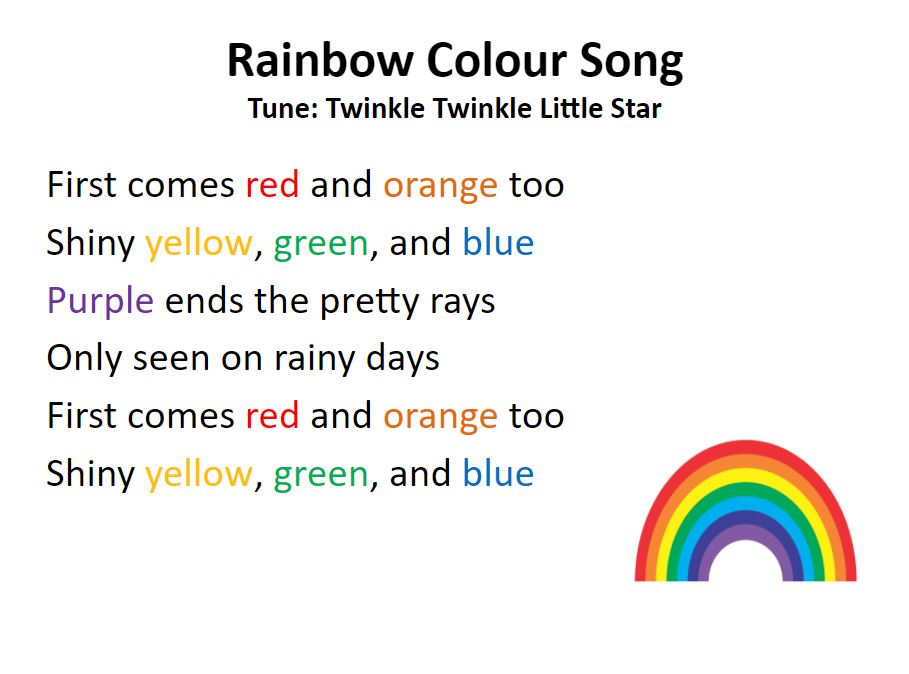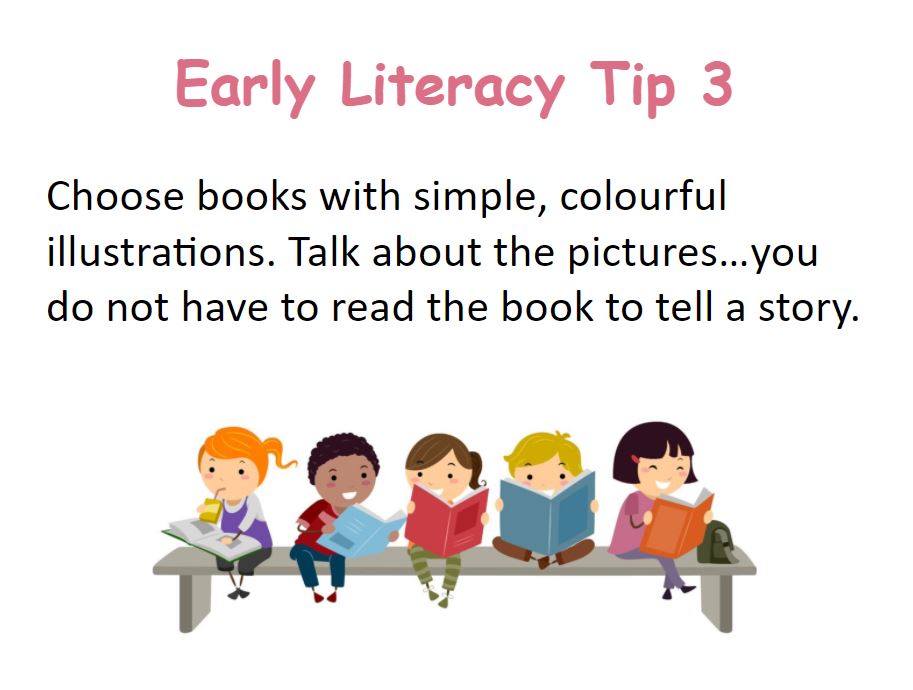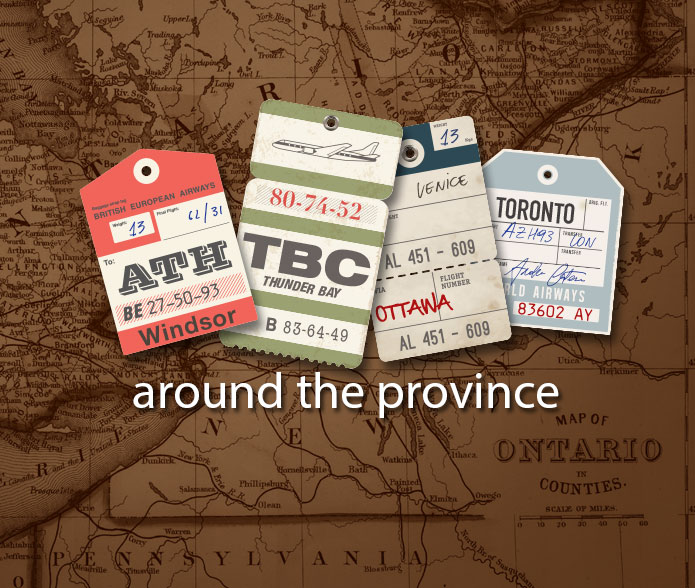Can mentorship help you in a career transition? Toby explores this as he recounts his decision to walk away from a tenure-track faculty position to become a librarian. Through OLA MentorMatch, he met with Jennifer Peters who helped him find where to focus on his job search.

“Sliding” into a new approach to storytime
Brianna Allen was a presenter in Round III of our June 2020 online panel discussion on work credentials: Librarians need an MLIS: True or false? Brianna’s answer to this question was “No”. Instead of choosing to pursue a graduate degree in order to work in libraries, she opted to do a library technician diploma. And she has no regrets.
She now has a fulfilling job with the Milton Public Library and in this limited series, she shares both her journey to finding her position with the library as well as some of the work that she does as a library technician. This month, she shares her experiences with preparing and delivering storytimes.
We’re talking about adaptation a lot these days. In the time of the coronavirus, library workers are having to learn new technologies, adapt programming to virtual environments, get comfortable with new procedures and regulations and find new ways to meet the needs of our community. Over the past year, I’ve been reflecting on my own ability to adapt to changing situations and realize that, in this early stage of my career, I’ve had to to be flexible and learn a range of new skills and approaches to work (e.g., new policies, ways of communicating and sometimes completely different organizational cultures). A good example of this need to adapt is storytime. I often lead storytimes in my work as a library technician at the Milton Public Library (MPL) and I’ve found by learning to “slide” (i.e., use slides) as part of my storytimes. I’ve not only improved my interactions with children and parents, I’ve also become more comfortable with adapting to new ways of doing my work.
Performing storytimes with slides vs without
“Once upon a time …” Most stories no longer begin with this classic opening line. However, telling tales and stories is definitely a staple of most public library programs in Ontario. Since I’ve begun my career as a library technician, participating in storytimes has been a key part of my role and it’s one that I enjoy, partly because I’ve learned that sharing stories plays a critical role in our support for children and their families. Prior to my position with MPL, my approach to storytime was to bring a handful of different books with me and choose the ones I wanted to read based on my perception of the children’s attention span “in the moment”. In addition, I would move on to different activities like rhymes and songs based on my sense of the children’s changing energy. Overall, I had a lot of freedom to change up my sessions and hit different beats and activities based on the audience’s reactions in real time.
When I began presenting storytimes at MPL, I was thrown off by the fact that they used slide presentations in all their storytimes. At first, I resisted using slides. I felt concerned that this tool would confine me to a script and force me to decide ahead of time which activities and books I wanted to perform at each moment of the program. Basically, I wondered if this structured approach would be too restrictive, and might negatively impact how children would engage with my storytimes. But as I began to adapt to this new way of presenting storytime, I began to see the benefits of “sliding” into a new way of providing this programming.
Slides and structure help staff, children, and parents
After a few weeks of using this new approach, I started to notice that I really loved having slides as a tool in my storytime toolkit. These visuals enabled me to improve every element of my program: storytelling, singing and other activities.
For example, songs are also an important (and fun!) element of storytimes. At MPL, many of us add notes with the lyrics, so that parents and children can recognize the song being sung and easily follow along–this works well because many songs use the same tunes but different lyrics. For example, I use the following slide for The rainbow colour song, which is sung to the familiar tune of Twinkle twinkle little star. I’ve put the title of the song at the top of the slide and then added the tune underneath.

I can also include informational slides, which give parents additional information, such as tips from the Ready to Read program.
These slides help to inform parents without breaking up the flow of my storytime (a balance I found difficult to achieve in the past). In the case of this early literacy slide, I share this slide when I am reading picture books but do not pause to discuss it. Instead, I give parents the time to read and think about the information on their own.

The more I used slides, the more I began to notice other key benefits for everyone involved. For children, the slides:
- became an outline I would use with my registered storytimes that allowed kids to become more familiar with the recurring songs and rhymes, or even anticipate the next activity;
- and created a routine that helped the children learn.
Children also benefit when their parents are engaged in storytime. When parents listen to the stories and songs they have something to talk to their children about when the event is over, and those conversations lead to an enriched vocabulary and a better understanding of the stories and their meaning. This is why I am extremely pleased with the ways in which slides can expand the parental engagement in my programs. So, for parents, these visuals:
- encouraged parents to engage more in the songs because they could follow along with the lyrics on screen
- and helped some parents become more comfortable connecting further and committing to the program. As the weeks went on, I have had parents ask me if they could have copies of my slides to take home and use, which excites me because it means that they are taking the opportunity to familiarize themselves with the lyrics and rhymes in between classes.
And, for me, the slides:
- helped me to add songs, rhymes and activities with which I wasn’t very familiar because I could refer to the slides for help;
- gave me a greater range in terms of activities that I could include each week;
- allowed me to refer to previous week’s activities. In fact, using the notes function in PowerPoint, I added information on my copy of the slides as to which activities worked well or didn’t and why, in order to help me create my future storytimes;
- gave me a template to build on and improve as I learn more with each session I deliver;
- overall, improved my own comfort and performance.
Using slides to deliver virtual storytimes
Milton Public Library staff have also found slides useful for delivering online storytimes. We film some of our storytimes and then post the videos on Youtube and have discovered that these sessions need to be well organized so that they look professional, are well paced, and stay within the necessary time restrictions. To produce professional videos, staff members must know which books they are going to read, and when they are going to incorporate activities during the session–slides can be used effectively as prompts to ensure the storytime goes smoothly. For example, while making my own MPL videos, I chose to have the slides up next to the camera so that I knew exactly which activity was coming next, and so that I could look at lyrics to avoid mistakes. I used the same technique during the live storytime I delivered via Zoom.
We have also started loaning out storytime kits to our registrants. These kits include accessories like scarves and egg shakers, and books necessary for children and their parents to participate fully at home. We also include printouts of our slides that include the rhymes and song lyrics, as well as a baby milestone trackers so that parents can track those special moments. Staff at MPL have also seen the added benefit that children who are over-stimulated by the noise have the option to lower the volume on their computer while still following along with the lyrics, making our storytimes more accessible to children with varied needs.
Final thoughts
I do recognize that some of the differences I’ve noticed between using slides and not using slides in storytimes may reflect the difference between leading drop-in and registered storytimes. Prior to my position with MPL, I had only ever performed drop in storytimes. Registered programs provide the opportunity to plan ahead and prepare additional materials, such as slides for a session. These programs also give staff a chance to get to know the attendees and pick weekly stories and activities that are tailored specifically to attendees’ needs.
I will admit that I’ve yet to fully master the art of moving back and forth between slides when I do want to deviate from my original outline. But this is the only real drawback I’ve experienced and overall my experience with using slides has been very positive despite my initial reservations.
I don’t know how many other library staff (in other library systems) use this slide format in their storytime programming—take our monthly poll and let me know what’s happening in your library. For me, the moral of this story(time) is that I can benefit from keeping an open mind to new ways of delivering programs, because I never know what idea or approach I will end up loving, if I give it a chance.
Brianna Allen is an early-career Library Technician currently working as a Service Associate with Milton Public Library. She is a recent graduate of Seneca College’s Library Technician program, and previously worked at Whitchurch-Stouffville Public Library as their TD Summer Reading Club Coordinator throughout the Summer of 2019.
Her passion for customer service drew her to a career in libraries, where she hopes to continuously improve her ability to provide patrons with the tools, information, and education they need. To her, public libraries are hugely important in the fight to narrow the gap between Canadians from lower income families, and those with wealth.
